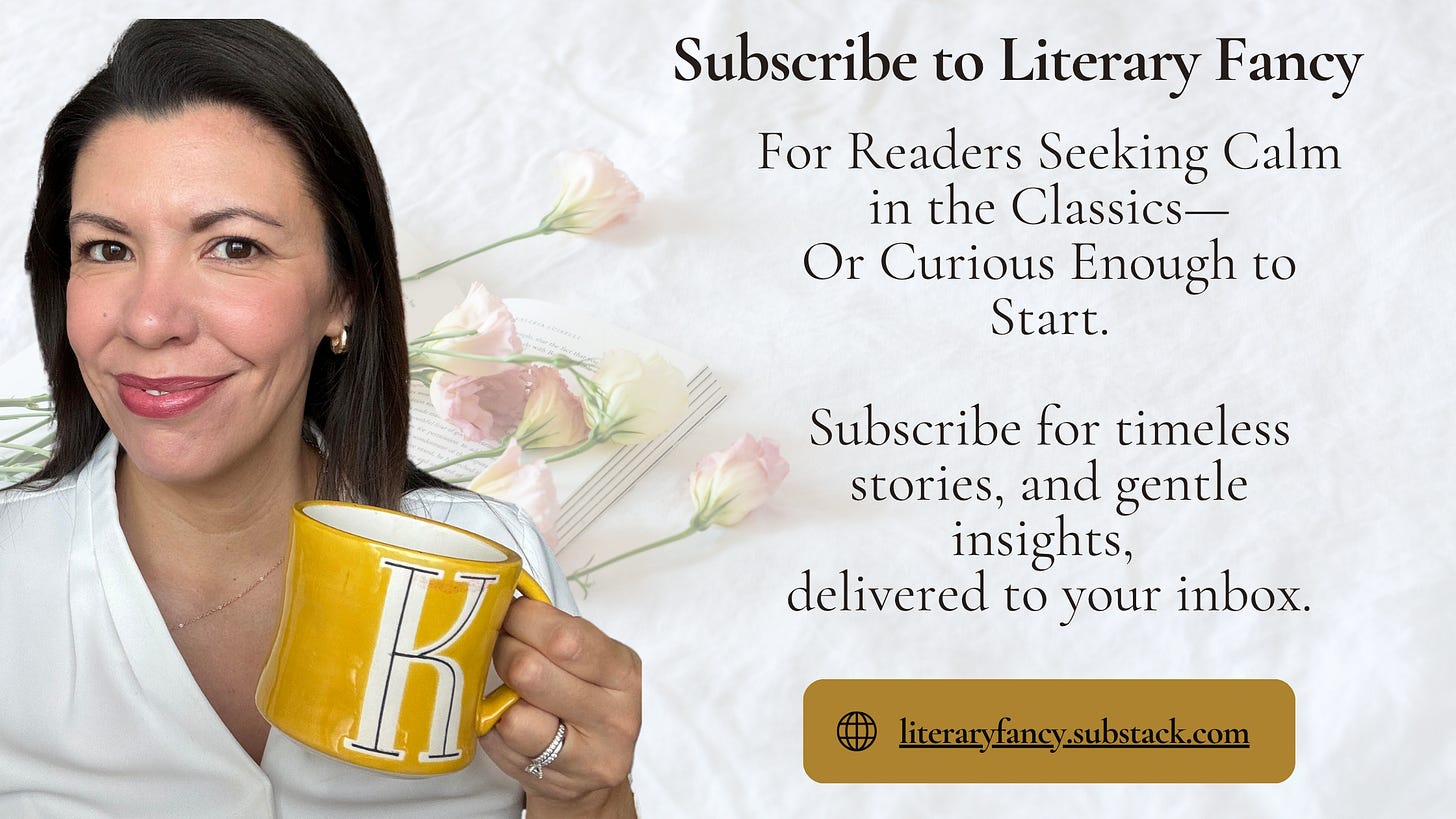How to Read Classic Literature (and Actually Experience It)
Unlock the deeper magic hidden inside every classic — with simple, powerful tools you can start using today.
There’s a reason classic literature is still with us.
It’s not just meant to be read.
It’s meant to be experienced, analyzed, and discussed — like a living conversation across centuries.
But to truly engage with these timeless stories, you need more than just turning the pages.
You need tools that help you track the themes, the character arcs, the history breathing beneath every sentence.
Today, I’m sharing simple, powerful ways you can read classics the way they were meant to be read: actively, thoughtfully, and joyfully.
1. Active Reading Strategies That Work
Passive reading = Skimming without interaction.
Active reading = Asking questions, marking insights, building connections.
Here’s how to engage deeply:
✅ Annotate Your Book (or Notebook):
Highlight or underline key passages.
Scribble questions or reactions in the margins.
Mark themes, motifs, or character shifts as they unfold.
✅ Use the "Five Touch" Method:
Pre-read: Get context or a quick summary before diving in.
First Read-Through: Read for pure enjoyment.
Second Read-Through: Take notes and mark important sections.
Discussion or Reflection: Talk about the book or journal your thoughts.
Final Revisit: Revisit your favorite passages weeks later with fresh eyes.
✅ Write Chapter Summaries:
After each chapter, jot 1–2 sentences about key events.
Track major character developments as they happen.
✅ Ask Big, Deep Questions:
What is the author revealing about human nature?
How does history shape this story?
What echoes of this book do you see in today's world?
2. Smarter Annotations with a Margin Notes System
One of the quickest ways to engage actively with a classic is to create a simple, intentional margin note system.
Instead of highlighting half the book (we’ve all been there 📚😅), you’ll mark specific types of moments that truly matter — making it easier to review and reflect later.
Here’s a smart, minimalist system you can start using today:
Important Passage → A turning point in the plot
Big Idea/Theme → A major quote about fate, love, or justice
Confusing Section → Anything you need to revisit later
Character Change → Key moments of growth
Favorite Quote → Lines that hit your soul
This way, when you revisit your annotations later (especially during journaling or book club discussions), you’ll be able to instantly find the most meaningful parts — without feeling overwhelmed.
3. Create a Classic Literature Journal
A journal isn’t just for English majors. It's a living record of how a story shapes you.
Fill it with:
Quotes that moved you
Quick thoughts: Was it engaging? Difficult? Eye-opening?
Sketches or visual notes
Modern life connections
A personal star-rating system (because you’re the real critic!)
4. Discussion and Book Club Strategies
Classics come alive when they’re discussed. Whether it’s a small book club, a lively online thread, or a quiet one-on-one conversation — talking about a classic sharpens your understanding and deepens your love for it.
Some universal discussion starters:
What's the main conflict?
Which characters surprised you?
What role does society or history play?
Did the ending satisfy you?
Are the lessons timeless — or have they changed?
Make Classics a Lifelong Habit
You don’t have to be an expert to love classic literature.
You just have to be willing to show up — actively, thoughtfully, heart-first.
✨ Annotate.
✨ Ask questions.
✨ Track your thoughts.
✨ Reflect.
✨ Share.
In time, these books stop feeling distant or intimidating.
They become something closer: a conversation you get to be part of.
✨ P.S. This lesson is part of my full course. If you’ve ever wanted to finally finish the classics—or even turn your love for them into a side hustle—I made something just for you.
Check out my course, From Page to Profit: How to Read, Review, and Monetize Classic Books. It’s simple, soulful, and designed to help you fall in love with reading again (and maybe even get paid for it).







